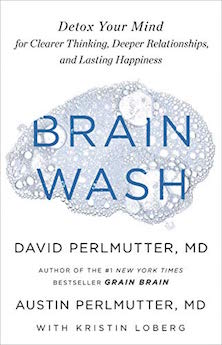Quiet Time: Be Mind Full

THE SCIENCE OF CALM
Mindfulness and other meditative practices such as deep breathing are powerful tools for wellness. We’re learning that these types of focused activities are capable of changing the body’s chemistry and physiology. For example, meditation has been shown to lower blood pressure. A 2017 review of the effect of mindfulness on chronic pain concluded that “mindfulness meditation interventions showed significant improvements for chronic pain, depression, and quality of life,” while another review revealed that mindfulness meditation, a specific type of meditation that emphasizes a focus on your present internal and external experiences, could improve the function of the immune system, largely through its effects on immune-boosting cells.
Further research in this field has shown that mindfulness in general can reduce biological signs of systemwide inflammation, which as you know is associated with many diseases and, it’s important to note, the brain’s ability to think clearly and better employ the prefrontal cortex. Meditation may even help prevent cognitive losses as we age: one review of the available literature stated, “Preliminary evidence suggests that meditation can offset age-related cognitive decline.” There’s also evidence suggesting that mindfulness practices may present an effective treatment for insomnia.8 Have we convinced you yet?
We often think of mindful activities such as yoga and meditation as methods to combat stress. This connection has been well substantiated. In 2014, for example, a group of marines received training in mindfulness-based techniques prior to being exposed to high-stress simulations of military activity. The researchers found that the heart and breathing rates of marines who had received mindfulness training returned to their normal baseline levels faster than those of marines who had not received the training. The marines who had the training also showed signs of improved immune function. In fact mindfulness techniques are increasingly being used in the military. In 2019, army infantry soldiers at Schofield Barracks, in Hawaii, began using mindfulness to improve their shooting skills. The practice can help a soldier avoid distractions amid chaos and focus on when to pull the trigger, avoiding unnecessary harm to civilians. In 2019, NATO held a two-day symposium in Berlin to discuss the evidence behind the use of mindfulness in the military. We predict it will become a staple in the training of soldiers.
You don’t have to be a soldier to benefit from mindfulness and other forms of meditation, however. One of the most comprehensive and well-cited studies in this area, a meta-analysis published in the Journal of the American Medical Association, reviewed all relevant trials on the subject, finding that mindfulness significantly reduces anxiety, depression, and pain. Another large-scale analysis looked at the effect of a practice called Transcendental Meditation on 1,295 people across sixteen studies. It, too, found that such a practice led to significant reduction in anxiety, which became even more pronounced in those starting off with high levels of anxiety.
What is going on physiologically to produce these powerful effects?
How Mindfulness and Other Forms of Meditation Change the Brain
Mindfulness techniques give you a way to consciously regain control over your thoughts, allowing you to rewire your brain for mental balance and happiness, creating connections where they matter most and giving you the tools to deal with the stressors of modern life. They can put you back in the driver’s seat in your own head. How do they change your brain?
A 2011 study conducted at Harvard University showed how effective mindfulness can be on influencing the brain’s structure. In this study, images of participants’ brains were obtained using high-resolution MRI. Then half the participants completed an eight-week training program called mindfulness-based stress reduction. Compared to those who did not participate in the training, this group experienced significant increases in gray matter concentration across multiple parts of the brain after completing the course. Their brains were visibly and quantifiably different.
This study built upon a seminal 2005 paper in which researchers at Massachusetts General Hospital, a teaching hospital of Harvard Medical School, published one of the first imaging studies to show that meditation is associated with increased thickness of the brain’s cortex. Since then, numerous studies have documented that “thick-brained”people tend to be smarter and have stronger memories than those with “thin”brains. And meditators tend to not suffer from the age-related brain loss seen in nonmeditators. Meditation may help preserve brain areas involved in attention, sensory processing, and planning complicated tasks or goals.
Most impressive is the fact that it may not take much mindfulness to change the brain. A 2010 study showed that eleven hours of mindfulness practiced over a one-month period was sufficient to create measurable changes on brain scans. And how might this brain rewiring be happening? One way is that meditation amps up the brain’s BDNF.
What does it look like when these interventions are taken to an extreme? In 2011, researchers at Yale University enlisted meditators who had logged, on average, more than ten thousand hours of practice over the course of their lives. They compared brain scans of the expert meditators with those of healthy nonmeditating volunteers. The results showed that meditators had significantly less activation of what’s called the default mode network — the region of the brain that is thought to be responsible for mind wandering — than nonmeditators. In other words, meditation may help us to stay focused and present, escaping a mindless, distracted approach to the day.
Here’s the key takeaway: because meditation reinforces areas of the brain that help us stay focused and present, it helps reprogram our brains for well-being, empathy, and gratitude. It also acts as a shield against the ongoing efforts to hijack our brains, strengthening our ability to resist.
As we’ve mentioned, our conscious actions and behaviors are largely regulated by the prefrontal cortex, which can analyze and act on information coming from the limbic system (containing the amygdala). In 2007, Dr. Yi‑Yuan Tang and his colleagues at Stanford University’s Center for Compassion and Altruism Research and Education examined whether meditation could affect this important bit of brain signaling. They were able to show that five days of meditation training (for only twenty minutes a day) led to improved performance on a test of executive function. More recently, in 2015, Dr. Tang demonstrated that mindfulness meditation could improve the ability to control emotions and stress levels. These improvements related to increased activity in the prefrontal cortex. The data dovetail perfectly with other trials showing that meditation enlarges the prefrontal cortices of meditators compared to the prefrontal cortices of those who only practice relaxation.
In a time of rampant loneliness, it’s also worth noting that meditation can increase our feelings of closeness with others. One study found that, in comparison to control subjects, a few minutes of loving-kindness meditation — a particular type of meditation designed to promote compassion and cultivate love — increased feelings of social connection. The authors suggested that such a practical technique could help increase positive social emotions and decrease social isolation. It’s unsurprising, then, that in meta-analyses meditation has also been shown to improve social emotions and behaviors.
Another research team wanted to test whether brain regions involved in executive function would also display increased connectivity after a mindfulness intervention. And indeed, they documented a significant increase in functional connectivity between the prefrontal cortex and several other regions of the brain after only three days of mindfulness practice. Perhaps more fascinating is that a 2013 paper by the team’s lead author showed that mindfulness was correlated with a smaller amygdala — the participants in the study group who were the most mindful had relatively smaller amygdalas compared to others in the group. This was true even after the researchers controlled for age, total gray matter volume, neuroses, and depression. But while it’s great to be calm and collected when we’re meditating, what about the other parts of the day?
A 2012 study showed that many of the positive changes associated with meditative practices affect the way we process emotion. The authors found that eight weeks of training in two different forms of meditation “yielded distinct changes in amygdala activation in response to [emotionally charged images] while the subjects were in an ordinary, non-meditative state. This finding suggests that meditation training may affect emotional processing in everyday life, and not just during meditation.” In other words, maintaining a regular meditation practice can, essentially, permanently restructure the brain and enable it to better cope with the stressors of life.
One central goal of mindfulness and meditative practices is to reestablish brain connections so that we can use our high-level brain function to better navigate our lives and avoid the pitfalls that come from consistently viewing the world as a scary and dangerous place. This allows us to reconnect to others and to our own deep sense of meaning and wellness. It also has the potential to give us what’s called ecological mindfulness. We now have scientific support for the idea that meditation inspires our efforts to solve complex environmental and sustainability challenges, including climate change. It can even motivate us to work for social justice and participate in activism. Put simply, when compared to nonmeditators, meditators care more not only for others but also for society at large and the planet. In the words of a 2018 paper published in the journal Sustainability Science, “It is concluded that mindfulness can contribute to understanding and facilitating sustainability, not only at the individual level, but sustainability at all scales.”
Given all these benefits of mindfulness practices, what are you waiting for?

Adapted from BRAIN WASH. Copyright © 2020 by David and Austin Perlmutter. Used with permission of Little, Brown Spark. New York, NY. All rights reserved
Click here to purchase “Brain Wash.”
This excerpt was featured in the January 26th edition of The Sunday Paper. The Sunday Paper inspires hearts and minds to rise above the noise. To get The Sunday Paper delivered to your inbox each Sunday morning for free, click here to subscribe.


